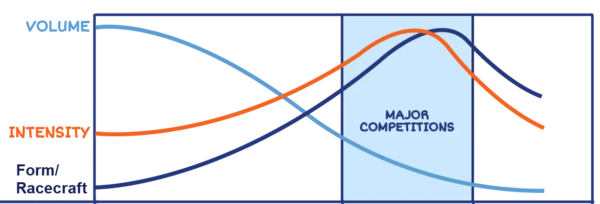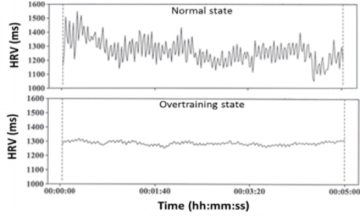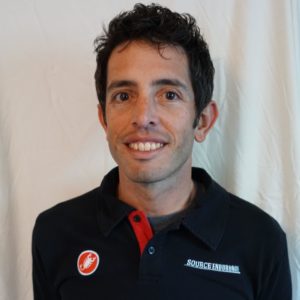Which Training Methodology Best Improves Your Performance. Systematic Review

Which Training Methodology is Right for You?
The general concept of leveraging different training methods to improve Functional Threshold Power (FTP), VO2 max and ultimately performance is immensely important to every endurance based performance athlete. Until now a direct systematic review comparing Traditional Periodization, Block periodization and day-to-day programming has been never conducted. Actually, there really hasn’t been a whole lot of energy devoted to even defining what those different methodologies mean. I happened across a peer reviewed article in the International Journal of Physiology and Performance (top 10 exercise science journal ranking in Scimago) and I wanted to spend some time breaking it down in “normal” terms.
With very few exceptions, there always seems to be a question that science strives to answer and it appears that the question here was asked by Dr. John Kiely when he pushes sport scientists to step back and observe that periodization has been the “go-to” for over 70 years. The amount of training and stress data gathered daily for athletes may very well call for a revolution in the way we develop training programs and that there seems to be no optimized pre-determined planning path. With that challenge set forth this systematic review appears to justify that not only does each training methodology reliably and effectively improve athlete performance but also to define both traditional and block periodization and to quantify which one works best. So let’s look at some methodologies!
Training Periodization isn’t a new term or idea. In fact, it was documented in 1916 by Russian scientist Boris Kotov in “Olympic Sport. Guidelines for Track and Field.”
Traditional Periodization: 
First developed by another Soviet scientist Matveyev (yes, the Soviets were world leaders in exercise science for a while) he established the concept of high volume/ low intensity (base) training before reducing volume and increasing the proportion of high intensity training. Seems familiar because it is and it’s been in wide use since at least the 1960s.
Traditional Periodization is criticized for sacrificing absolute performance for frequent episodes of good performances. However, is that a weakness or a strength? Competitive seasons are long with frequent races that challenge directors and coaches to effectively manage athlete usage and load. Also, elite/ professional teams demand that more emphasis is placed on consistently performing well vs inconsistently being amazing with long episodes of mediocrity.
Block Periodization: 
In contrast to Traditional Periodization, Block Periodization is shown as highly concentrated training workload phases with resulting residual effects that are realized after a rest phase. In many ways it appears to have evolved as v2.0 of Traditional Periodization that would work better for a time-crunched athlete. However, with it’s easy to follow systematic progression many athletes find that it’s easy to follow and thus is a favorite for elite and amateur athletes. Many elite/ professional athletes plan their calendar based on Block Periodization utilizing race blocks with long intermissions between for specific training blocks. Again, this sounds familiar because it is.
Day-by-Day Programming: 
The studies cited in this study are heart rate variability (HRV) based. The general premise is that HRV values guide the day’s training and athlete’s are not aware of the exact parameters of the day’s workout until they have awakened that morning.
Comparing VO2 max across models:
All the methodologies showed significant improvement! The improvement varied by high intensity duration, number of sessions and weeks/ months of the study protocol but at the very worst, everyone got a little bit better.
Power at Oxygen Consumption at Threshold(s). FTP:
Again, every methodology showed significant improvement. The improvement varied based on a number of training variables but again, effectively everyone got a little bit better.
Take Home Message:
The authors put it best, “The main finding of the present review is that there is currently no preponderance of evidence that a specific periodization model (TP or BP), or day-by-day programming model is generally more effective in trained road cyclists. Furthermore, no evidence has been found supporting the superiority of a specific periodization approach compared with day-by-day (non-periodized) programming of training based on monitoring feedback.”
This begs another question of what is the best way to help an athlete improve performance (VO2 max, FTP)? To answer this we’re going to assume, based on the study conclusions, that all these methodologies are equally effective. To put it another way, the most effective training is whichever method enables the athlete to successfully accomplish the largest percentage of sessions. As a coach it’s important to not only be able to prescribe training in a multitude of methodologies but to also be able to switch from one to another based upon the needs of the athlete. Managing training load becomes more difficult the more variables are introduced to an athlete’s life. Professional coaches will help guide athletes to their best performances using whichever method is best for them.
Article Cited:
Galán-Rioja MÁ, Gonzalez-Ravé JM, González-Mohíno F, Seiler S. Training Periodization, Intensity Distribution, and Volume in Trained Cyclists: A Systematic Review. Int J Sports Physiol Perform. 2023 Jan 14:1-11. doi: 10.1123/ijspp.2022-0302. Epub ahead of print. PMID: 36640771.
Thanks for reading.
About the Author:
Adam Mills has raced at the elite level since 2002 and graduated with a Masters Degree in Exercise Physiology from the University of Kansas in 2005. His true talent comes with his ability to combine his vast experience with his knowledge of sport. He is indeed a student of science, sport, athletic performance, strategy, and tactics. He continuously educates himself by keeping up to date with current research trends and methods in sport and his clients have reaped the benefits from this work with over 24 national championships in 11 disciplines on two continents. Adam is able to incorporate these attributes on a daily basis to help his clients reach and exceed their goals whether they are a beginner or a seasoned professional. Learn more about Adam and Source Endurance here.

